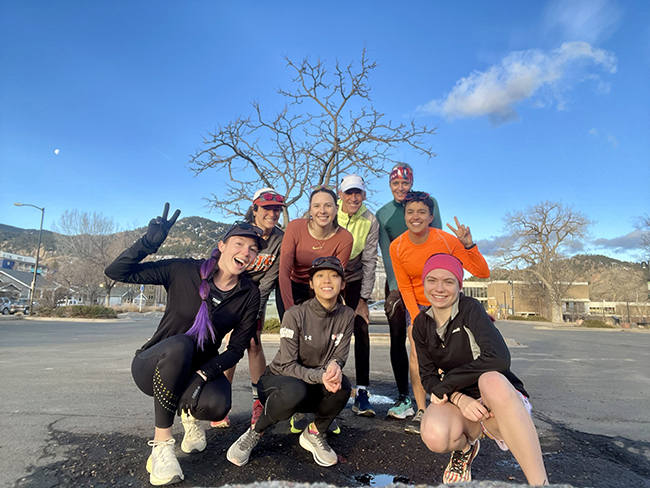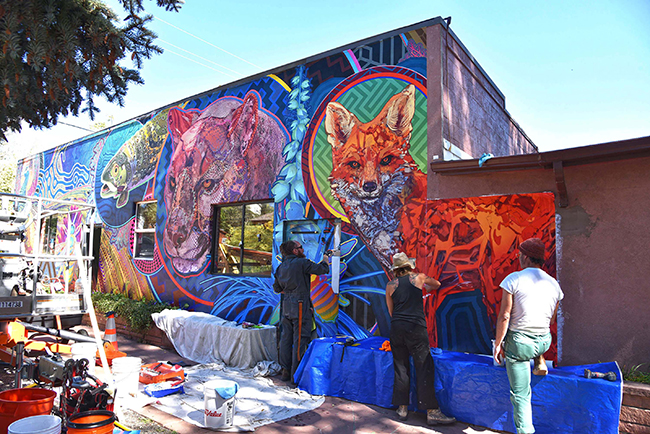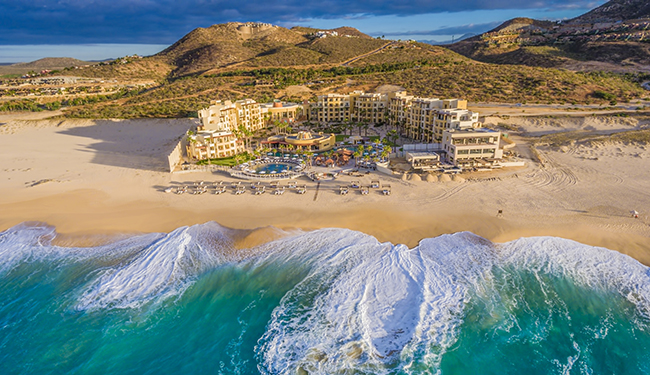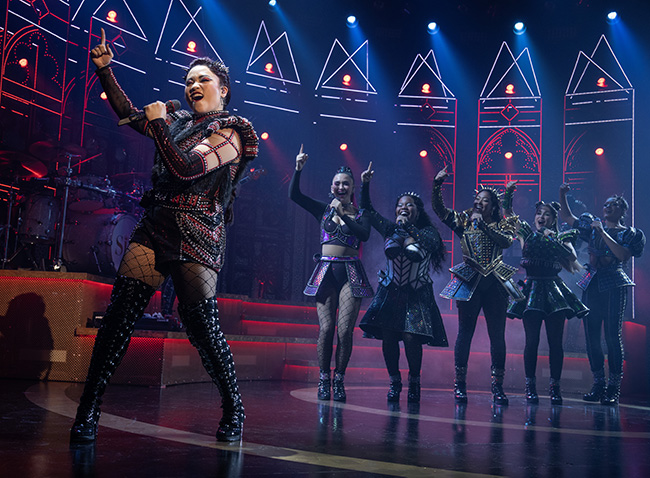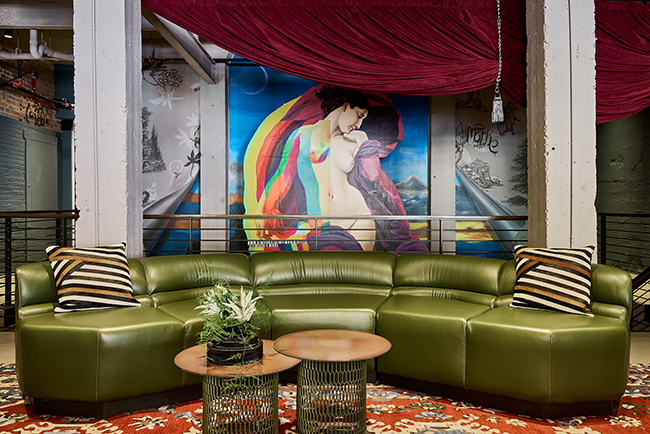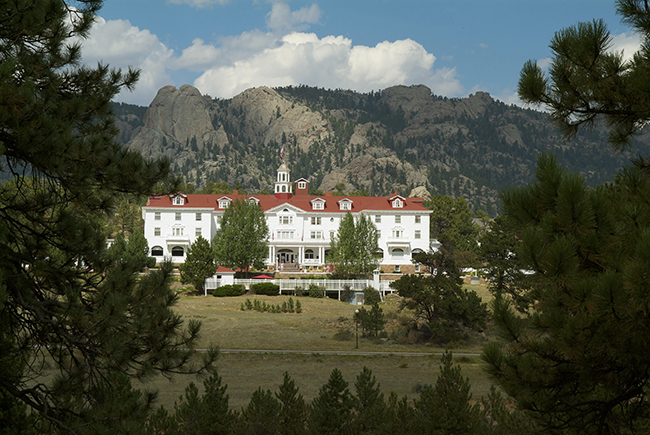Quiet Corners
04 Aug 2024
Navigating Yellowstone away from the crowds
By Irene Middleman Thomas
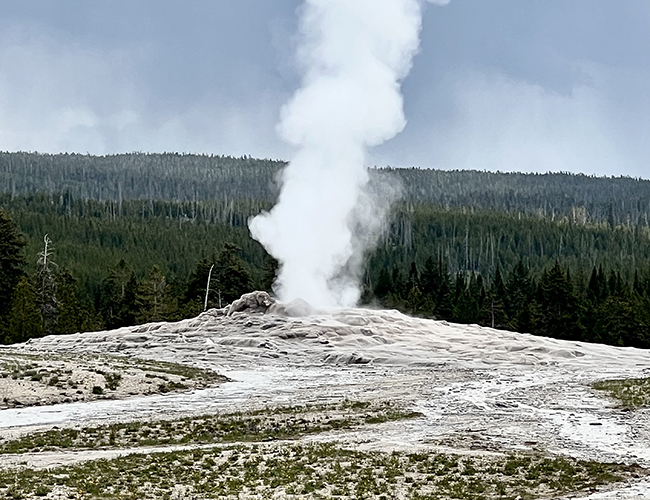
We have elk in Colorado. We have bison, black bears, foxes, deer, wolves and thundering waterfalls. We do not have 10,000 mind-boggling, other-worldly thermal features, including 500 active geysers, bubbling mud holes, sky-scraping fumaroles and hot springs blanketing meadows as far as one can see.
But Yellowstone National Park does, boasting more of these natural wonders than anywhere else on Earth. Yes, there are crowds, but with creativity, persistence and planning, you can avoid the worst of them.
But first, let’s travel back in time to before the crowds and commercialization, to 1872, when Yellowstone became the world’s first national park. Imagine a time when vast, untamed wilderness stretched as far as the eye could see, untouched by modern development. Picture the awe of early explorers as they marveled at the geysers, hot springs and diverse wildlife that populated this breathtaking landscape. It was a pioneering era, filled with the spirit of discovery and the desire to preserve nature’s wonders for future generations
In 1978, Yellowstone was named a UNESCO World Heritage Site. With over two million acres, 450 miles of paved roads, 67 species of mammals, 285 species of birds and those stunning, incredible hydrothermal features, Yellowstone is the 8th largest in the U.S. National Park system.
In recent years, the park has experienced severe flooding, enormous forest fires and suffered a 7.5 earthquake in 1959. Happily, it is thriving, with new growth and wildlife galore.
Yellowstone delivers on its heralded glories. On my recent visit, I enjoyed my most thrilling wildlife sighting within five minutes of entrance. Right next to me was a scruffy red fox, brazenly carrying a rather large rodent in its mouth, while it gazed warily at passing cars.
I had many more wildlife sightings, including two different mama grizzly bears with cubs, countless bison, several black bears, a few deer and elk (although nothing like what we see in Estes Park).
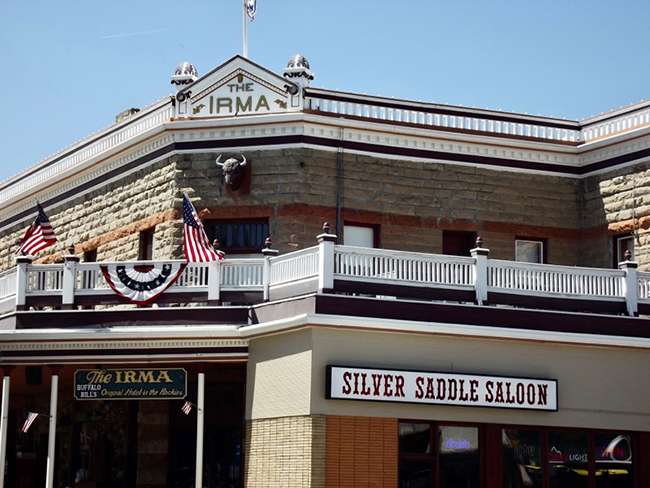
For those of us eager to avoid the summertime crowds and traffic jams, Alvin Hegge, self-named “Wrangler in Chief” of the private Yellowstone Tours by Cody Shuttle, advises visiting during shoulder seasons. “Every season is special. Spring and fall are definitely my favorites. Spring is full of wildlife and new babies learning their surroundings. Fall is special because the elk rut is taking place and bears are eating as much as possible before hibernation. However, most of the park’s infrastructure is closed.”
The park’s iconic, circa-1930’s Historic Yellow Buses are charmers, offering many tours, such as the “Twilight on the Firehole,” an evening journey into the valley just north of Old Faithful, and the “Picture Perfect Photo Safari,” a tour geared to photographers seeking unique shots of wildlife and thermal areas. Guests can even book a private tour and customize it to their interests; however, most visitors are set on seeing the dazzling travertine terraces at Mammoth Hot Springs, the pristine Lake Yellowstone, the renowned thermal features and the famous waterfalls.
The tours are managed by Yellowstone National Park Lodges, managed by Xanterra Travel Collection, the authorized concessionaire of the National Park Service since 2013.
Hegge advises, “A great guide knows the tricks to view wildlife and find bathrooms, picnic spots and specific viewings, such as Old Faithful and Grand Prismatic, at just the right time to avoid getting stuck in a crowd.” Visitors will see the most wildlife sightings—and the least amount of people—before 8am or after 6pm. Fortunately, park gates are open 24 hours.
Arriving at the National Landmark designated Old Faithful Inn, I was fascinated by the magnificent 1904 architecture. The “Old House” is considered the largest log structure in the world, and free public tours are given daily.
Outside the Inn, I opted out of standing with the others to see the famed Old Faithful erupt. Instead, I strolled the wide boardwalks through the Geyser Basin, and I was mesmerized by smaller thermal features, including the bubbling cauldron-like mudpots and the steam rising from endless fissures. Later, I realized had a perfect vantage point to see Old Faithful from my hotel room in the moonlight.
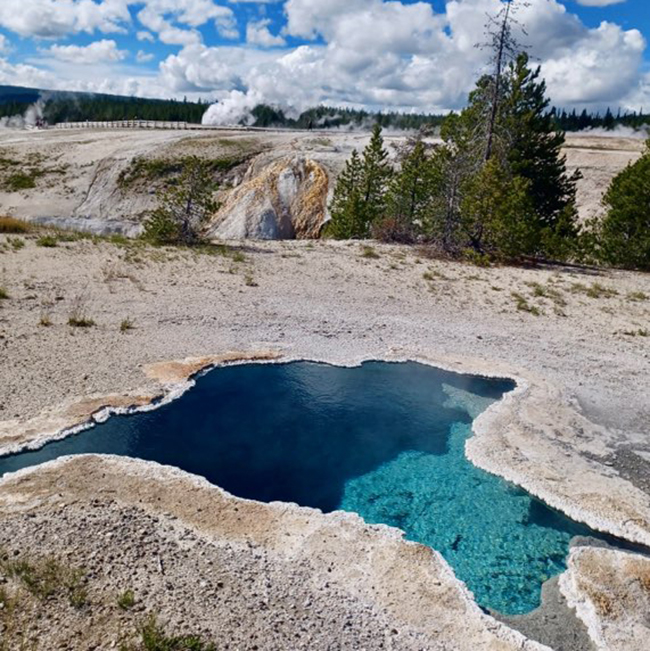
Mammoth Hot Springs is another of the park’s sights that fascinates its visitors, with its travertine terracing that features a myriad of colors caused by the minerals in the springs. With an extensive boardwalk system, the area is a photographer’s dream, with its hissing, bubbling, steaming. I found myself alone on a long stretch of boardwalk and felt like I was on another planet.
My other hidden gem in Yellowstone was the elegant Lake Hotel, the park’s oldest lodge, meticulously maintained and steeped in history. The hotel fronts Yellowstone Lake, the largest high-elevation lake in the lower 48. Strolling the shoreline, I found a clearing where I sat on a log, undisturbed, relishing the sounds of lapping waves, songbirds and rustling leaves, surrounded by strawberry blossoms.
The Secrets of Cody
The smallish town of Cody was founded by William “Buffalo Bill” Cody, and his legacy is everywhere. About three hours from the east entrance of Yellowstone, Cody is well worth a visit of a few days. Check out Buffalo Bill’s still-operating Irma Hotel with abundant taxidermized animal heads on the walls and the gorgeous cherrywood bar gifted to him by Queen Victoria.
Cody’s Buffalo Bill Center of the West is an outstanding Smithsonian Affiliate five-museum complex (Whitney Western Art Museum, Plains Indian Museum, Draper National History Museum and Cody Firearms Museum), which is so expansive that tickets are valid for two days. The Whitney recently won the “Best Art Museum in the U.S.” from Newsweek readers and it truly is superb, with masterpieces by Fredric Remington and Charles M. Russell, Albert Bierstadt and many more. The complex offers private, exclusive tours with expert guides.
Cody’s Heart Mountain Interpretive Center, about 20 minutes outside of town, is a moving, provocative and expertly designed National Historic Site with a museum, original camp structures and military memorial, telling the dark story of one of the ten incarceration camps to which 14,000 West-Coast Japanese Americans were forced to go after WWII’s Pearl Harbor attack.
Cody also offers the usual kitschy Western stuff, such as a nightly rodeo in the summer months and shops hawking fudge and T-shirts. It also offers many Western wear stores, such as Leonard Sanchez’s Buckstitch Canvas Saddle and Tack, where working cowboys and cowgirls go for authentic snap-button shirts and tooled leather boots. The town has a rich Western history, but Cody is also very artsy, with numerous galleries. For high-end Western furniture and art, visit the By Western Hands gallery, with original Thomas Molesworth designs. Cody is considered by many to be the “epicenter” of the Western Design movement in furnishings.
The Chief Joseph Scenic Byway, Wyoming 296, is a gorgeous 47-mile route to Yellowstone through the Shoshone National Forest. A hot tip? Listening to the free TravelStorys app about the byway while traveling is entirely delightful and very informative.

